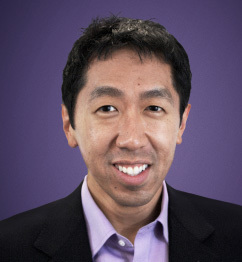Andrew Ng

Talking 'bout MOOC Generation
December 06, 2013 | 20:30
He led the first really popular online course at Stanford, achieved one of the best results in the development of an AI ever by simply showing it cats on YouTube and, of course, founded Coursera. On December 6, Andrew Ng, legendary professor, engineer, and advocate of free learning, lectured at the Digital October Center.
On December 6, the Digital October Center held a weblink with Andrew Ng, the director of the Stanford Artificial Intelligence Lab and cofounder of Coursera.org, the most popular free online education program.
The recipient of a doctorate in engineering and computer science at age 26, Andrew was hired at Stanford. His early research gave the world a miniature “smart” helicopter that learned how to fly on its own and ROS, an open operating system for robots that Ken Goldberg spoke about on Knowledge Stream.
This work in the area of machine learning in six years landed Andrew on MIT’s list of 35 innovators under 35, a list frequented by such figures as the creators of Linux, Google, and Facebook, as well as the designer of iMac.
At about the same time he received the Computers and Thought Award, which is “the premier award for artificial intelligence researchers under the age of 35.” Incidentally, he only turned 35 in 2011.
Regardless, his most well-known project is doubtless in the education sphere. In 2008 he initiated the release of Stanford Engineering Everywhere, funded by Sequoia Capital, where open access was provided to video and printed materials from the university’s courses. That was where Ng’s first lectures on machine learning appeared: outlines for a course that currently enjoys immense popularity at Coursera.
At the end of 2011 he decided to take his course online for the first time, separate from but under the name of Stanford. When 100,000 students and experts from around the world registered, Andrew understood that the time had come to resolve the issue of large-scale distance learning.
In a few months he and Daphne Koller, his colleague at the artificial intelligence lab, had already released Coursera, an educational platform that needs no introduction.
After the lecture any who wish to do so was able to ask him questions. For example, about this:
Two years ago Andrew was invited to Google X (the laboratory that produced Glass and the driverless car projects), where the Google Brain experiment was run under his supervision. Creating a computerized neuron network, Ng and his colleagues gave it full freedom— that is, no introductory information —and unlimited access to cat videos on YouTube.
Surprisingly, the system itself learned to recognize “cat” by comparison, that is, for the first time it was able to repeat what only humans had been able to do. Incidentally, that experiment helped perfect Android’s voice recognition system.


































